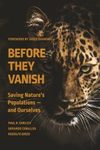By
Leon (NHBS Catalogue Editor)
20 Aug 2021
Written for Hardback

Fossils are our prime source of information about life in the past. As I delve deeper into palaeontology and earth sciences, the process of fossilisation increasingly fascinates me. How does dead biological tissue fossilise? What information is lost, what is added, and what is distorted in the process? And, ultimately, how true or filtered a picture of past life does the fossil record provide? The edited book
Fossilization brings together scientists from a range of disciplines working on cutting-edge topics. The result is a well-written if somewhat eclectic collection of chapters that addressed some of my queries and also answered questions I did not even know I had.
This book needs some context. Despite the single-word title,
Fossilization is not a textbook that will introduce you to taphonomy, the process of fossilisation. (I might be overlooking something, but my impression is that there is no good recent textbook and I would need to refer readers to older books such as
Life History of a Fossil or
Taphonomy.) Nor does this edited collection strive to be an as-broad and as-inclusive overview as possible. No, essentially
Fossilization is a showcase of the research being done at DFG Research Unit FOR 2685 at the University of Bonn in Germany. Funded by the Deutsche Forschungsgemeinschaft (the German Research Foundation), this is a consortium of nine research projects under a program titled "The Limits of the Fossil Record: Analytical and Experimental Approaches to Fossilization".
What these projects are, however, is interdisciplinary. As two of the editors clarify in their introduction, the focus of this research unit is the small: evidence at the histological, cytological, and molecular level. This is where palaeontology starts touching on neighbouring disciplines and progress requires the know-how and input from e.g. microbiologists, organic chemists, mineralogists, geochemists, pharmacists, and petrologists. Furthermore, "fossilisation" is much more than just bones turning to stone. It is an umbrella term for several geochemical processes that vary with both tissue chemistry and the environment, encompassing processes such as silicification (of wood), pyritization (of arthropods), permineralization (of bones), and others.
Next to an introductory and a concluding chapter,
Fossilization contains eight chapters that break down into four chapters on palaeobotany, two on fossil animals, one on amber preservation, and one on Raman spectroscopy, all of which clock in at between 20-40 pages. Throughout, attention is paid to the many modern variations of microscopy, spectroscopy, and spectrometry that can be brought to bear on fossil material. What stood out is how readable these chapters are. I am not much of an expert in any of the above disciplines, yet found that I could follow along with most chapters just fine. And some of this material is outright fascinating.
Thus, there is a chapter on soft-tissue preservation at the microscopic level, think cells or blood vessels, in dinosaur and other tetrapod bones. Is this original material or biofilm produced by bone-degrading bacteria? I remember this discussion making news headlines a few years ago. A review of studies so far concludes that the evidence points towards the former. Another chapter looks at the fossilisation of reproduction-related tissues and structures in avian dinosaurs and birds, and what analytical methods you could use to detect them. So far we have found evidence of e.g. ovarian follicles, shell membranes, eggshell pigmentation, and medullary bone (this is incidentally the same study that Lomax referenced in
Locked in Time).
Two chapters stood out in particular. Chapter 5 looks at soft-tissue preservation of arthropods trapped in amber. The authors argue that there are two preservation pathways with radically different outcomes: either decay with loss of all soft tissue so that only an arthropod-shaped void remains or, spectacularly, complete preservation. They then discuss what factors might be responsible for this dual pathway. Chapter 8 draws heavily on the work of one of the authors, Conrad C. Labandeira, and reviews fossil evidence for insect-plant interactions, looking both at traces of insect damage, but also at structural and chemical defences in plants. We know that insects and plants coevolved but these authors propose a model of four phases during the last 400 million years of arthropod herbivory expanding and, in response, plant defences developing. This is a fascinating idea that is crying out for a popular treatment, and if I had to point a university press towards an idea for a new book, this chapter is it.
More technical chapters give an introduction to Raman spectroscopy and how it can be used in palaeontology, and the structure and chemistry of silica in mineralized wood. Fossil wood also features in a chapter on experimental silicification of wood in the laboratory with comparisons to the fossil record. This chapter mentions the interesting phenomenon of in vivo mineralization where living trees in certain environments, for example Yellowstone National Park, are already fossilising during their lifetime. Finally, there is a chapter on colour in the palaeobotanical record which gives a thorough introduction to colour in living plants and then asks whether the colours we see in fossil plants result from original material, their degradation products, or from later diagenetic processes. A colour plate section, relevant especially to the last chapter, is included.
Given the book’s somewhat eclectic selection of topics and relatively high price tag, who is this for? Depending on your interests and background, your mileage may vary and you might wish to only consult a few chapters. I would thus argue that this book is particularly suitable for academic and institutional libraries. For them, it is a worthwhile investment as edited collections of this kind are often picked up by the likes of Springer or Elsevier who publish print-on-demand books with production values not nearly half as nice as
Fossilization at double the price.


































